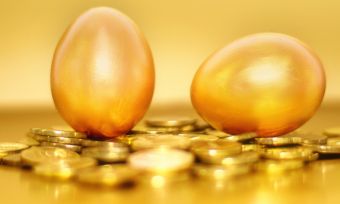It has been a mixed year for KiwiSaver. The latest report by the Financial Markets Authority shows that the average Kiwisaver balance has risen 4.3%, while investment returns were down $1.9 billion. So, knowing how to pick your KiwiSaver fund and safely grow your investment is more important than ever.
So, if you think it’s time to review your KiwiSaver – something you should be doing regularly – then you may be wondering how to ensure you get the best returns. How can you avoid missing out on the next big KiwiSaver boom? And while there is no full-proof guarantee that your next fund will be No.1, with a little research you can find a fund that will be right for you.
Canstar guides you through how to pick your KiwiSaver fund.
How Does KiwiSaver work?
KiwiSaver is a savings scheme set up by the government to help Kiwis build a nest egg for retirement. Instead of simply putting your money into a savings account, where it gains a minuscule amount of interest, your KiwiSaver funds are invested into different assets to grow your investment. This is done by your KiwiSaver provider or fund manager.
The fund you choose will determine what type of assets your money is invested into (and the level of risk) but common investments include shares, property, government bonds, cash and other fixed-term interest investments. Investments such as shares and property are considered growth assets, because they have the opportunity to grow in value. Whereas things such as cash and bonds are income assets, that offer smaller but more secure (and often fixed-rate) returns.
What KiwiSaver funds are there?
The main options when looking for a KiwiSaver fund are:
- Defensive fund
- Conservative fund
- Balanced fund
- Growth fund
- Aggressive fund
The level of risk and growth potential involved in each differs. The more growth assets (shares and property) the more volatile your investment will be. It has the potential for large returns and large losses. The more income assets (cash and bonds) the more stable but with less growth opportunity.
The different fund types meet the needs of different investors. Which, we will outline below.
How to pick your KiwiSaver fund: defensive fund
A defensive KiwiSaver fund provides the highest level of security but the lowest potential for growth. A defensive fund holds less than 10% of your investment in growth assets. Instead, it invests primarily in things such as cash and government bonds. While these are low risk, there is still no guarantee that you won’t lose some of your investment. And, because any growth is likely to be small, it may not even keep up with inflation.
Defensive funds are only suitable for those who are not looking for further growth in their KiwiSaver fund. But rather are looking for security. Those who want to avoid dips in balance and maintain their investments. That may be because they have reached retirement age and are looking to hold on to what they have. Or perhaps they are FHBs who are about to use it as a home deposit and can’t afford a sudden drop in balance.
How to pick your KiwiSaver fund: conservative fund
A conservative fund is similar to a defensive fund, but with a touch more risk. Conservative funds hold anywhere from 10% to 34.9% in growth assets. These funds remain suitable for those who want added security, but with a little more growth potential. Perhaps you haven’t yet retired but are just a few years away. Or, you could be looking to buy a first home within the next few months. As such, you want to avoid any drastic dips in balance, but you can afford to have a little short-term risk for better growth opportunities.
How to pick your KiwiSaver fund: balanced fund
As the name suggests, this fund is a balance between income assets (such as cash, bank deposits, bonds, and other fixed-interest investments) and riskier growth assets (around 35%-62.9%) such as shares and property. This results in a fund that has a balance of high risk-high reward investments and secure, low-growth assets.
Balanced KiwiSaver funds are typically suited to investors who are not looking to withdraw in the next 5-10 years. They are comfortable seeing a fair degree of variation in their balance for potentially greater long-term returns than those offered by conservative or defensive funds.
How to pick your KiwiSaver fund: growth fund
Growth funds are good for investors who don’t intend on accessing their KiwiSaver in the next 10 or so years and, as such, are okay with seeing highs and lows within that period. The reward is that growth funds tend to offer much higher long-term returns.
Growth KiwiSaver funds hold a significantly larger proportion of growth assets: 63% to 89.9%. And as a result, move with the market. Meaning your KiwiSaver balance could be well up one week and well down the next. So, naturally, this type of fund may not be appropriate for those looking to retire soon, or those about to access their KiwiSaver for a first home deposit.
How to pick your KiwiSaver fund: aggressive fund
Aggressive KiwiSaver funds are similar to growth funds, but with an even higher share of growth assets (90%-100%). This means that the risk of losses is even greater, but so are potential gains. If you choose an aggressive fund, you need to be comfortable experiencing drastic drops in your KiwiSaver balance.
As you would expect, an aggressive fund is probably not right for you if you plan to access your KiwiSaver in the short term.
How to pick your KiwiSaver fund: active vs passive management
It’s also worth considering if your fund is managed actively or passively.
A passively managed fund uses computers to track an index and to buy and sell corresponding shares automatically, thus, matching the chosen index’s trajectory. While a passively managed fund might come with lower fees, it can never outperform the index it is tracking.
An actively managed fund, on the other hand, is controlled by a fund manager, who implements an investment strategy based on expert research and analysis. Those actively managing KiwiSaver funds look to use their expertise to outperform the market.
→ Related article: Active Investing vs Passive: What it Means for your KiwiSaver
How to pick your KiwiSaver provider
Once you have decided on the fund type that is appropriate for your needs and appetite for risk, you need to choose your provider. Nearly every KiwiSaver provider offers all the funds mentioned above, so if you decide on a balanced or growth fund, there will be several for you to choose from. And while returns are the name of the game, it’s important to look at a range of factors before settling on a provider.
When choosing a provider you need to consider:
Consistency
Be careful if you see a provider reaping sky-high returns and, before you invest, make sure you look at the returns over a longer amount of time. If the year before they made large losses, those returns may not actually be gains. Returns over a five-year period tend to offer a clearer picture of which funds are providing the best value.
Fees
The annual fees charged by KiwiSaver providers can vary. In fact, the fees charged can vary by hundreds of dollars. That can have a huge impact on the returns you earn.
Ethics
If you’re all about saving the planet and doing good, this could also play a role when picking a provider. While in the past KiwiSaver schemes have put money into less ethical investments, think weapons and tobacco, most schemes no longer make these kinds of investments.
However, that doesn’t mean your provider is as green as you are. Many still invest in companies that are (directly or indirectly) involved in deforestation, environmentally damaging mining and fossil fuels. If that doesn’t sound like you, you can find KiwiSaver funds that are focused on only making ethical and environmental-friendly investments.
→Related article: Top Ethical KiwiSaver Schemes
Compare KiwiSaver providers with Canstar
Finding out the returns and fees of all the different KiwiSaver funds is easy with Canstar. We compare funds for you, all in one place, so you can see which is right for you. With our helpful comparison tool, you can see the past one-year, three-year, five-year, and even seven-year returns of all the available funds, alongside other information such as annual fees, termination fees, added features, and the Canstar star rating. To learn more or to start comparing click the button below:
Compare KiwiSaver funds with Canstar
How to sign up for KiwiSaver
Signing up for KiwiSaver is easy. In fact, if you are already a full-time employee, your employer should have signed you up already. It may pay to double-check you’re not a member.
If you are not signed up for KiwiSaver then you need to apply to a KiwiSaver provider directly. This is relatively easy and can be done online. Once you have decided on the fund you want, simply go to the provider’s website and sign up!
Doing this is not too different from signing up to any other website. You’ll need to provide some basic details, such as your IRD number and a valid ID. And in some cases, the new provider may contact you for some extra info, such as proof of address. Otherwise, this setup should take just a few minutes.
How to switch KiwiSaver providers
If you are already a KiwiSaver member and are looking to change providers, the steps above remain the same. Simply visit the new provider’s website and sign up. Your new provider will handle the withdrawal of your funds from your current provider and switch them over for you. So you shouldn’t need to do anything more.
Keep in mind that changing over your funds can take up to two weeks, and, your current provider may charge a leaving fee. So it pays to check the terms first.
Compare KiwiSaver Providers with Canstar
If you’re comparing KiwiSaver funds, the comparison table below displays some of the products currently available on Canstar’s database for a KiwiSaver member with a balance of $20,000 in a Growth fund, sorted by Star Rating (highest to lowest), followed by company name (alphabetical) – some may have links to providers’ websites. Use Canstar’s KiwiSaver comparison selector to view a wider range of retirement funds. Canstar may earn a fee for referrals.
To read more about our latest KiwiSaver Awards or to compare KiwiSaver providers, click on the button below.
Compare KiwiSaver providers for free with Canstar!
About the author of this page
This report was written by Canstar Content Producer, Caitlin Bingham. Caitlin is an experienced writer whose passion for creativity led her to study communication and journalism. She began her career freelancing as a content writer, before joining the Canstar team.
Enjoy reading this article?
You can like us on Facebook and get social, or sign up to receive more news like this straight to your inbox.
By subscribing you agree to the Canstar Privacy Policy




Share this article